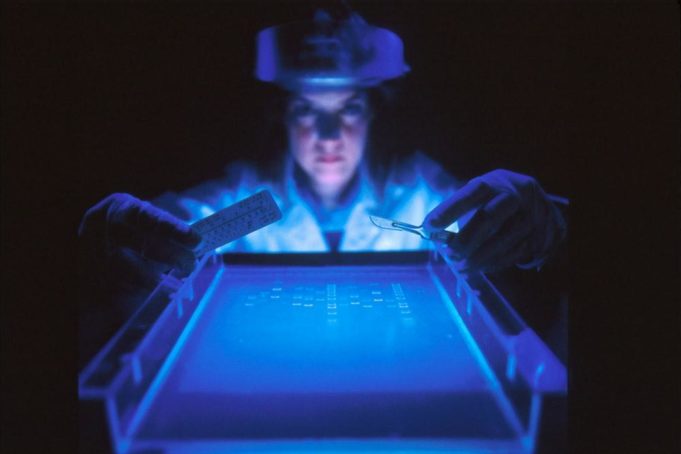The Covid-19 crisis took many healthcare systems by surprise. As a result, finding a way to alleviate the burden of exhausted medical workers became the priority.
Some interesting sensor technology innovations emerged from this unfortunate situation, as they aimed to help monitor the patients’ health remotely.
In this article, we are going to discuss these innovations in more detail.
Sensors in a Facemask Designed to Diagnose Covid-19

Engineers at MIT and Harvard University joined forces to design a prototype facemask capable of diagnosing the wearer with Covid-19. The masks were incorporated with tiny, disposable sensors that can be adapted to detect the presence of other types of viruses too.
These sensors were based on freeze-dried cellular machinery, previously developed for diagnosing viruses such as Ebola and Zika.
The mask also has a small water reservoir that gets discharged upon pushing the button. This action hydrates the freeze-dried components of the SARS-CoV-2 sensor.
The sensor then analyzes gathered breath droplets on the inside of the mask and displays the result within 90 minutes.
The researchers state that these sensors could also be incorporated into clothes, such as lab coats. They could be used to monitor the exposure to a variety of pathogens and other potential threats to medical workers or military personnel.
Rockley Photonics’ Spectrometer On a Chip

A spectrometer refers to an instrument that separates and measures spectral components of a physical characteristic. It detects and analyzes wavelengths of electromagnetic radiation.
Some of the main applications of spectrometers include:
- Observing dissolved oxygen ratio in freshwater and marine ecosystems;
- Protein characterization;
- Analysis of respiratory gas in hospitals.
We can differentiate three main types of spectrometers:
An optical spectrometer measures the characteristics of light, often near the optical region in the electromagnetic spectrum – ultraviolet, visible, and infrared light (UV Vis NIR)
The mass spectrometer measures the mass-to-charge relation of ions and detects the composition of elements in the sample.
Nuclear Magnetic Resonance (NMR) spectrometer monitors and measures the interaction of nuclei spins. The sample is placed in a strong, constant magnetic field.
Rockley Photonics has developed a photonic clinic-on-the-wrist device. The device contains hardware, application firmware, and cloud analytics. This wristband is basically a spectrometer with silicon photonic sensors.
It monitors a person’s blood with a sensor module that produces multiple discrete laser outputs from a single silicon chip. It can measure body temperature, blood pressure, hydration level, alcohol level, lactate and glucose trends, and more.
Rockley Photonics revolutionized biomarker monitoring by offering this non-invasive method for blood analysis.
G-putty – a Strain Sensor
The collaboration of Graphene Flaghship at Trinity College Dublin and the National Graphene Institute at The University of Manchester, under the leadership of Professors Johnathan Coleman and Robert Young, brought us a G-putty strain sensor.
The researchers used a children’s toy, known as Silly Putty, as the main inspiration behind their product.
Silly Putty is made out of starchy, moldable polysilicon polymer. The researchers added graphene to this material to make it highly conductive and perfect for sensors. The new material is proven to be high-performing for sensing pressure, impact, and deformation.
A G-putty sensor can be placed on a person’s chest area to monitor breathing and help with conditions such as sleep apnea. The sensor can also be placed over the carotid artery for measuring pulse rate and blood pressure.
The researchers envisioned their product to be used in wearable medical and health-related sensors. But G-putty might expand its application to monitoring and collecting data from industrial robots and autonomous driving systems.
Railway Monitoring Fiberoptics Adapted for Monitoring Health
The researchers at Hong Kong Polytechnic University have repurposed the advanced railway safety monitoring technology to create new fibreoptic microsensors. These microsensors are biocompatible, flexible, and sensitive to the smallest pressure changes in the human body.
Instead of the traditional glass or plastic optical fibers, the researchers made their sensors from the special ZEONEX plastic material.
The ZEONEX material is very durable and resistant to humidity. It doesn’t react to chemical changes, and it can be made to be a few micrometers in size.
All these features make it perfect for integration with various medical implants. Because this material has 20 times more pressure sensitivity than the traditional optic sensor, it can be used for measuring pressure changes in the lungs while breathing.
Some future applications might include precise navigation during cardiac catheterization and implantation procedures, as well as monitoring bone and fracture recovery.
Conclusion
Covid-19 revealed the vulnerability of many health care systems, forcing humanity to act fast. And many researchers recognized the need for developing new products for remote health monitoring.
Innovations like wrist bands that act like spectrometers, children’s toys as strain sensors, and clothes with incorporated sensors make us believe that there are no limitations to human ingenuity.












